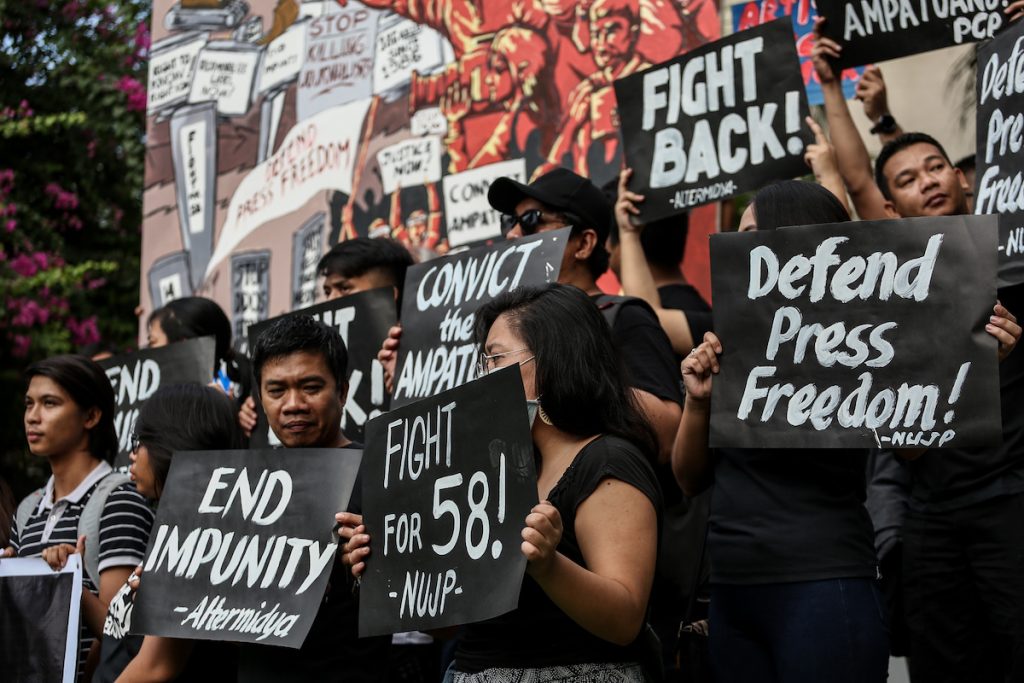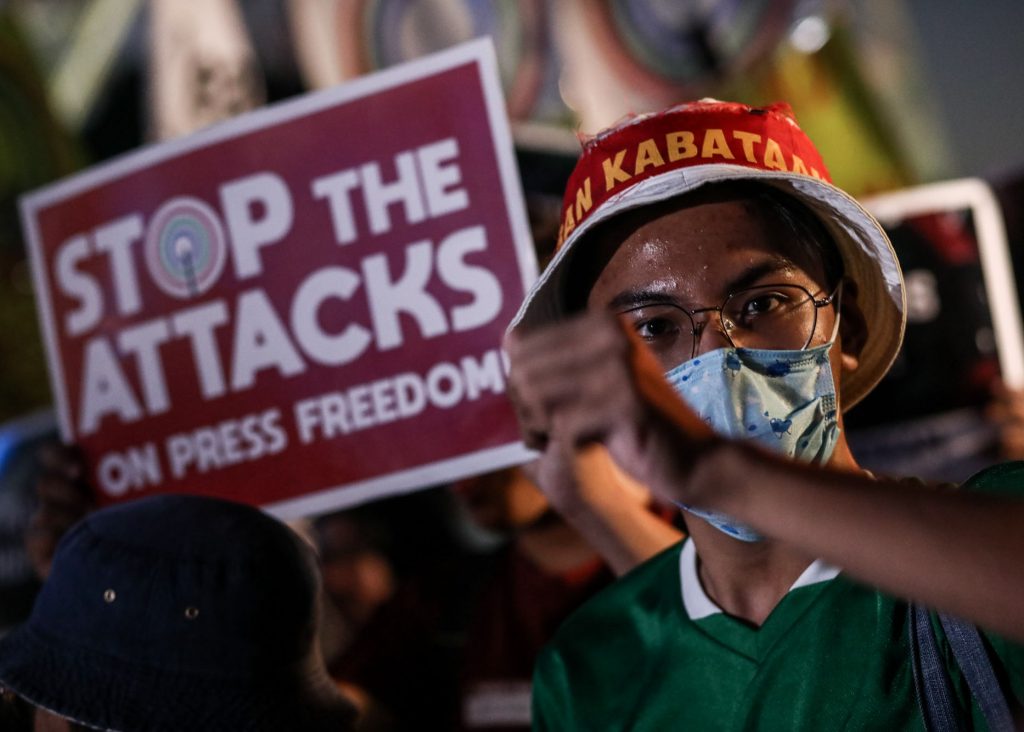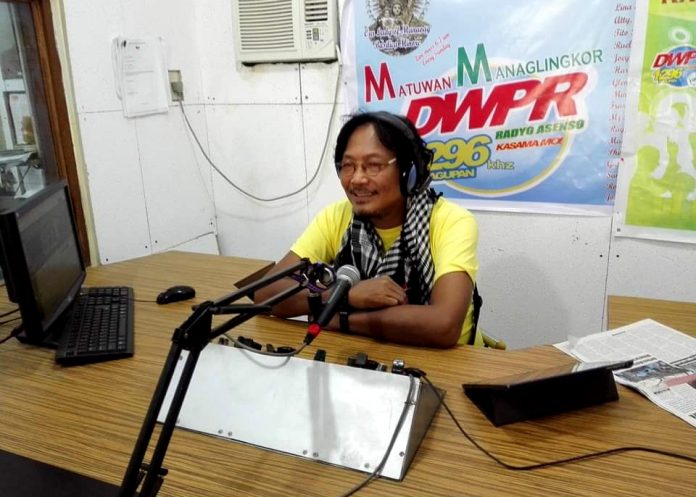A Filipino broadcast journalist was shot dead by still unidentified gunmen in the northern province of Pangasinan in the early morning of November 10, three days after he turned 62, on November 7.
Virgilio Sarmiento Maganes was shot several times at about 6:45 a.m. while walking near his residence in the village of San Blas, Villasis town.
Police investigators, who recovered six empty caliber 45 shells from the crime scene, pronounced Maganes “dead-on-the-spot.” The gunmen later fled on a motorcycle, police said.
Maganes was the 18th Filipino media worker killed since 2016, when President Rodrigo Duterte came to power, according to the National Union of Journalists, and was the 190th since 1986 when democracy was restored in the country.
The Presidential Task Force on Media Security described the killing as “an act of cowardice,” adding that the presidential palace “strongly condemn(ed)” the killing and vowed “to hunt down and punish those responsible.”
“We are deeply saddened by the untimely death of Virgilio Maganes and extend our sincerest condolences to his family,” said Martin Andanar, head of the Presidential Communications Operations Office and the presidential task force.
“This administration condemns any type of killing, especially those in the media,” he added.
Joel Sy Egco, executive director of the task force, said his office is “on top of the situation and is closely coordinating” with the family and friends of the victim.
“I will oversee the investigation personally and conduct a case conference before visiting the wake,” he said, adding that the “cowardly killing in the midst of a pandemic is unforgivable.”
“We will get to the bottom of this and will stop at nothing in identifying and hunting down the people behind this despicable crime,” said Egco.
Maganes has earlier survived an attempt on his life on Nov. 8, 2016 by feigning death.
Through the efforts of the presidential task force, a “frustrated murder charge” was filed in court against one of the suspects but was later dismissed after Maganes executed an “Affidavit of Desistance.”

Condemnations
The National Press Club of the Philippines also condemned the incident and called on newly-installed national police chief, Major General Debold Sinas, to prioritize the resolution of cases involving media practitioners.
“We condemn the cold-blooded murder of our fellow journalist … occurring as it did at a time when all of us remain under threat from the COVID-19 pandemic,” said Paul M. Gutierrez, press club president.
“We call on [Sinas] to prioritize the resolution of this incident if only to show that he deserves his promotion and with it the trust of the public,” added Gutierrez.
Gutierrez said Maganes was the second journalist murdered during the pandemic.
Rex Cornelio Pepino, a radio journalist from the central Philippine city of Dumaguete, was also shot dead on May 5.
The National Union of Journalists in the Philippines also demanded for “fast action” from authorities to solve the death of Maganes.
“Even as we mourn the loss of a colleague and extend our heartfelt sympathies to all those he left behind, the community of independent Filipino journalists shall not let his death be in vain,” read a statement from the union.
“We will continue to seek justice for [Maganes] and all our other fallen colleagues as we continue our struggle for genuine freedom of the press and of expression in our country,” it added.
The College Editors Guild of the Philippines said the organization “vehemently condemns” the murder of Maganes, “a fellow journalist, and a friend of truth.”

‘Biggest mover’ in addressing media killings
In October, the Philippines has found its way out of the list of top five countries enabling impunity for murders of journalists.
The Global Impunity Index 2020 released by the Committee to Protect Journalist on October 28, noted that the Philippines now ranks 7th out of the 12 countries that were included in the index this year.
Eighty percent of the global total of unsolved murders of journalists for the 10-year index period have transpired in these countries, according to the media watchdog group.
The Philippines was described in the report as the “biggest mover” in this year’s rankings, improving from being in the fifth spot in 2019.
There are still 11 unsolved murders of journalists in the country, according to the index.
“The change reflects the fact that the November 2009 Ampatuan, Maguindanao, massacre of 58 people, including 30 journalists and two media workers, no longer falls into the 10-year time frame for calculating the index,” the report read.
“Landmark convictions late last year led CPJ to adjust the status of the Ampatuan cases to ‘partial impunity’ from ‘full impunity’ previously – meaning that they would no longer have figured into the index calculation regardless of the time frame,” it added.
In December 2019, a trial court has declared several members of the influential Ampatuan clan guilty of multiple murder for the Maguindanao massacre which claimed dozens of lives, including 32 media workers.
This massacre has been considered by the CPJ as the single deadliest attack on the press since it began keeping records on journalist deaths.









